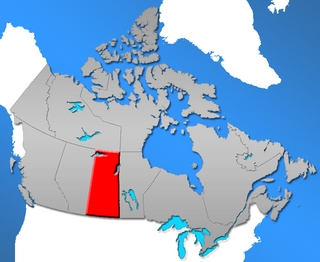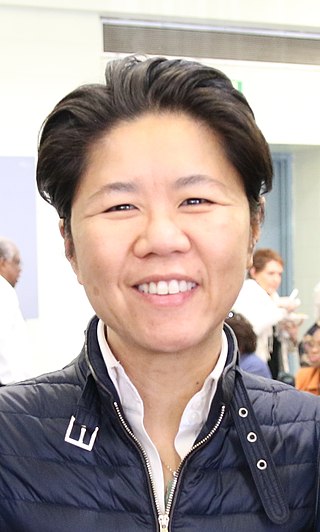
The Greater Toronto Area, commonly referred to as the GTA, includes the City of Toronto and the regional municipalities of Durham, Halton, Peel, and York. In total, the region contains 25 urban, suburban, and rural municipalities. The Greater Toronto Area begins in Burlington in Halton Region to the west, and extends along Lake Ontario past downtown Toronto eastward to Clarington in Durham Region.

The Security and Prosperity Partnership of North America (SPP) was a supra-national level dialogue with the stated purpose of providing greater cooperation on security and economic issues. The Partnership was founded in Waco, Texas, on March 23, 2005, by Prime Minister of Canada Paul Martin, President of Mexico Vicente Fox, and U.S. President George W. Bush. It was the second of such regional-level initiatives involving the United States following the 1997 Partnership for Prosperity and Security in the Caribbean (PPS).

C40 Cities Climate Leadership Group is a group of 96 cities around the world that represents one twelfth of the world's population and one quarter of the global economy. Created and led by cities, C40 is focused on fighting the climate crisis and driving urban action that reduces greenhouse gas emissions and climate risks, while increasing the health, wellbeing and economic opportunities of urban residents.
The Economic Council of Canada was an independent economic advisory body established as a federal Crown Corporation by the Government of Canada in 1963. Its purpose was to report on a wide range of pressing matters relating to Canada's economic development, focusing on five main economic objectives: full employment, sustained economic growth, price stability, equitable distribution of rising incomes, and a viable balance of payments. The council was dissolved alongside six other government organizations in 1993.

The economic impact of immigration is an important topic in Canada. Two conflicting narratives exist: 1) higher immigration levels help to increase economy (GDP) and 2) higher immigration levels decreases GDP per capita or living standards for the resident population and leads to diseconomies of scale in terms of overcrowding of hospitals, schools and recreational facilities, deteriorating environment, increase in cost of services, increase in cost of housing, etc. A commonly supported argument is that impact on GDP is not an effective metric for immigration. Another narrative for immigration is replacement of the ageing workforce. However, economists note that increasing immigration rates is not an effective strategy to counter this entirely. Policy Options found that mass immigration has a null effect on GDP. Increased immigration numbers and the associated soaring housing prices has significantly contributed to the rise of inflation in 2021 to the highest in 18 years.
Interreg is a series of programmes to stimulate cooperation between regions in and out of the European Union (EU), funded by the European Regional Development Fund. The first Interreg started in 1989. Interreg IV covered the period 2007–2013. Interreg V (2014–2020) covers all 27 EU member states, the EFTA countries, six accession countries and 18 neighbouring countries. It has a budget of EUR 10.1 billion, which represents 2.8% of the total of the European Cohesion Policy budget. Since the non EU countries don't pay EU membership fee, they contribute directly to Interreg, not through ERDF.

Lawson Heights Suburban Centre is a neighbourhood that is maturing, and is located in north east Saskatoon. The neighbourhood features high density residential areas, major commercial suburban development area centre, transit mall, large green space parks which are slated for upgrade, and secondary institution. It is situated just east of the North West Industrial SDA and near the South Saskatchewan River Lawson Heights Suburban Centre combines a proximity to amenities offered by a comprehensive industrial development and the scenic river and river bank park system.

Higher education in Ontario includes postsecondary education and skills training regulated by the Ministry of Colleges and Universities and provided by universities, colleges of applied arts and technology, and private career colleges. The current minister is Jill Dunlop who was appointed in June 2021. The ministry administers laws covering 22 public universities, 24 public colleges, 17 privately funded religious universities, and over 500 private career colleges. 18 of the top 50 research universities in Canada are in Ontario.

Higher education in Canada includes provincial, territorial, indigenous and military higher education systems. The ideal objective of Canadian higher education is to offer every Canadian the opportunity to acquire the skills and knowledge necessary to realize their utmost potential. It aspires to cultivate a world-class workforce, enhance the employment rate of Canadians, and safeguard Canada's enduring prosperity. Higher education programs are intricately designed with the perspective of the learner in focus, striving to mitigate risks and assure definite outcomes.

Historically, Saskatchewan's higher education system has been "significantly shaped" by demographics. In 1901, six years prior to the 1907 founding of a university in Saskatchewan, the urban population in Saskatchewan was 14,266 (16%) while the rural population was 77,013 (84%). One hundred years later, the proportions had changed significantly: urban population in 2001 was 629,036 (64%) while the rural population was 349,897 (36%). Over time the province's higher education system has changed significantly in response both to this demographic shift and to provincial politics.

Higher education in New Brunswick refers to education provided by higher education institutions in the Canadian province of New Brunswick. Higher education has a rich history in New Brunswick. The first English-language university in Canada was the University of New Brunswick. Mount Allison University was the first in the British Empire to award a baccalaureate to a woman, Grace Annie Lockhart, B.Sc. in 1875. Education is the responsibility of the provinces in Canada and there is no federal ministry governing it.

Higher education in Nova Scotia refers to education provided by higher education institutions. In Canada, education is the responsibility of the provinces and there is no Canadian federal ministry governing education. Nova Scotia has a population of less than one million people, but is home to ten public universities and the Nova Scotia Community College, which offers programs at 13 locations.

Montreal's economy is the second largest of all cities in Canada and the first in Quebec. Montreal is a centre of commerce, industry, technology, culture, finance, and world affairs. In 2022, Metropolitan Montreal was responsible for $233 Billion CDN of Quebec's $425 Billion CDN GDP, with a population of 4.37 million people. Montreal's economy, therefore, comprises approximately 54.8% of Quebec's overall GDP.
The Canadian Council on Learning was a channel for lifelong learning, encouraging and supporting data-based decisions about learning during all stages of life, from early childhood through to the senior years. The organization received about 85% of its funding from the Government of Canada, which announced in January 2010, that it was not renewing its funding. The organization's website is no longer available.
Open data in Canada describes the capacity for the Canadian Federal Government and other levels of government in Canada to provide online access to data collected and created by governments in a standards-compliant Web 2.0 way. Open data requires that machine-readable should be made openly available, simple to access, and convenient to reuse. As of 2016, Canada was ranked 2nd in the world for publishing open data by the World Wide Web Foundation's Open Data Barometer.

Kristyn Wong-Tam is a Canadian politician who has represented Toronto Centre in the Legislative Assembly of Ontario since 2022 as a member of the Ontario New Democratic Party (NDP).

Canada–Democratic Republic of the Congo relations are the bilateral relations between Canada and the Democratic Republic of the Congo. Canada has an embassy in Kinshasa and D.R. Congo has an embassy in Ottawa.
Marilou McPhedran is a Canadian lawyer, human rights advocate and politician. Since October 2016, McPhedran is a member of the Senate of Canada.
Joyce Boye is a former federal food research scientist with Agriculture and Agri-Food Canada with a specialty in value-added food processing, food safety and food quality. She has expertise on plant proteins and their importance in helping to improve human health and nutrition. The Food and Agriculture Organization of the United Nations appointed Boye to be a Special Ambassador for North America for the 2016 International Year of Pulses.

Public–private partnership in Canada is a form of alternative service delivery that involves a formal, collaborative arrangement between the public and private sectors, typically of a long-term nature. Public–private partnerships are commonly used for infrastructure projects related to healthcare, transportation, the environment, justice and correction, recreation and culture, and education.













